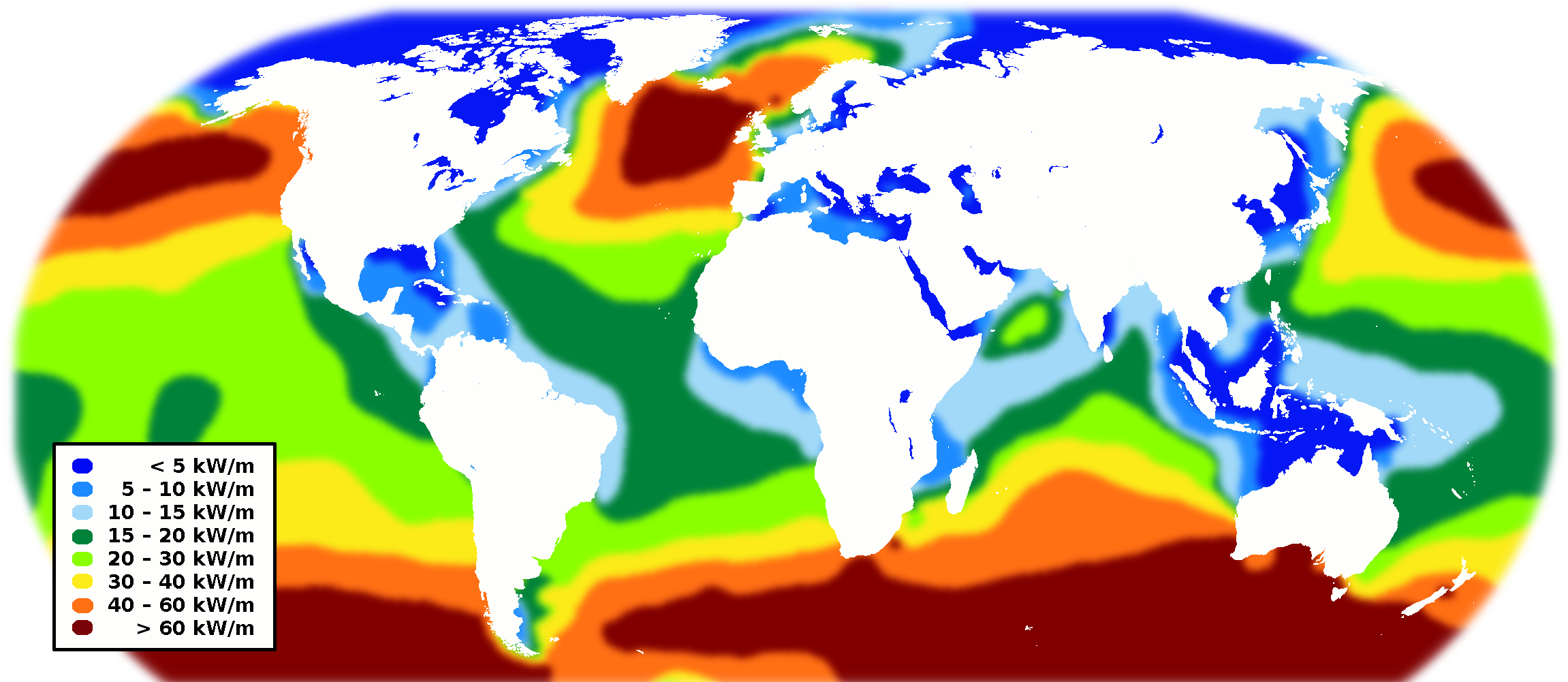The ocean is a vast and mostly untapped source of renewable energy that can be harnessed to support sustainable development and significantly reduce the carbon emissions that contribute to climate change. Ocean waves are ideally suited to power desalination plants and hydro turbines because of their superior energy density, consistency and predictability compared to other renewable energy resources such as wind and solar.
Waves are created by energy passing through water, causing it to move in a circular motion.
Wave energy could meet a significant portion of the world’s electricity and fresh water demand. The worldwide energy resource of wave energy is more than 29,500 TWh per year, while the total amount of electricity consumed worldwide was 22,016 TWh in 2017.
Locations with the most potential for wave power include the western seaboard of Europe, the Pacific coastlines of North and South America, Southern Africa, Australia, and New Zealand.

World Wave Energy Resource Map (ref. Wikimedia Commons)
The history of wave power is rich with leading edge companies trying to develop the most reliable and efficient solution (click for more info).
Exowave has identified the following as key elements for success, and worked hard to adopt each one of them:
- Survivability: Our choice has been to make a fully submerged solution, ensuring extreme survivability
- Reliability and maintainability: We have developed a simple technology, made of just few parts, that can be easily maintained
- Power performance: The projected costs of producing energy and fresh water with our technology, are competitive with existing market solutions
- Scalability: Our solution has been developed with scalability and flexibility as key engineering drivers. We can work in shallow and deeper water, in large-scale installations or single-unit installations
